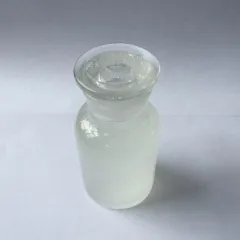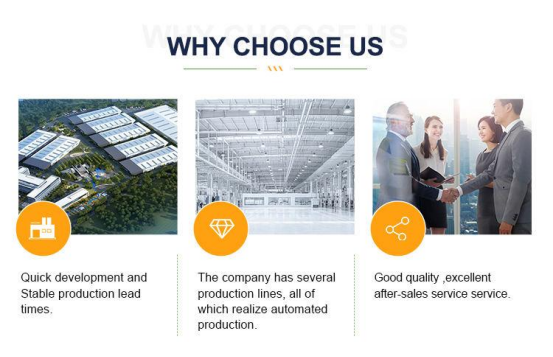Overview of phosphating powder:
Phosphating powder usually refers to a binary compound composed of metal or nonmetal and phosphorus. Metal phosphides, such as calcium phosphide, zinc phosphide, aluminium phosphide, copper phosphide, etc.
Non-metallic phosphides do not interact with water and acids at room temperature. Most metal phosphides can be formed by the direct combination of metal and phosphorus.
Ionic phosphides include alkali metals, alkaline earth metals, zinc, aluminium and other phosphides.
Metallic phosphides include the phosphides of most heavy metals. They are similar to intermetallic compounds in composition and appearance, and most are not easily decomposed by water or acid.

Application of phosphating powder:
Ferrophosphorus (containing 23-29% phosphorus) is used to prepare high-strength steel. Containing 0.1-0.3% (alloyed) phosphorus can greatly improve the strength and corrosion resistance of steel. Ferrophosphorus is a by-product of the production of elemental phosphorus by the electric furnace method. General commercial ferrophosphorus also contains a small amount of silicon, chromium, alum and other impurities.
Magnesium phosphide releases half its mass of phosphine in the humid air.
Aluminium phosphide also releases highly toxic phosphine in moist air and is therefore used as a grain fumigant.
Copper phosphide is used as a deoxidizer.
Gallium phosphide is used as a semiconductor.
Phosphating Powder Suppliers:
We provide different kinds of phosphating powders, such as calcium phosphide, zinc phosphide, aluminum phosphide, copper phosphide, etc. Send an email or click on the desired product to send an inquiry.
Payment Term:
T/T, Credit Card, Western Union, Paypal etc.
Term for delivery:
By air, courier or by sea according to the needs of the customer.
Conditions of storage:
1.) Maintain a dry area at the temperature of room.
2.) Avoid high and damp temperatures.
3.) Utilize immediately following the opening of the bag inside.

FAQ:
Q1:
What is phosphorus powder?
Re: Phosphorus powder is phosphate rock powder, also known as phosphate rock powder. It is a representative variety of insoluble phosphate fertilizer; the main component is fluorine apatite (chemical formula Ca10(PO4)6F2), containing total phosphorus (phosphorus pentoxide) 10-35%. Phosphate rock itself has no odor, is gray or brown, and is a delicate granular matter. Among them, 3-5% of phosphorus is soluble in weak acids and can be absorbed by crops, while most of the other crops are difficult to absorb and utilize directly.
Phosphate rock powder can be used as a base fertilizer on acidic soil but can not be used as a top-dressing fertilizer. Reasonable and correct use of phosphate rock powder can not only increase the yield of crops and improve the quality of crops but also make the grains of cereal crops fuller.
Q2:
What is the difference between metallic phosphorus powder and non-metallic phosphorus powder?
Re: Metal phosphating powder is a unique phosphorus powder product; it is mainly used for metal surface treatment, increasing the corrosion resistance of metal surfaces and coating adhesion. Phosphating is a standard metal surface treatment technology that forms a phosphate conversion film on the metal surface through a chemical reaction to improve the corrosion resistance, wear resistance, and coating adhesion of the metal.
Therefore, the main difference between metal phosphating powder and non-metallic phosphorus powder is its application field and use. Metal phosphating powder is mainly used for metal surface treatment, while non-metallic phosphorus powder is widely used in other fields, such as match manufacturing and phosphate fertilizer manufacturing.
Q3:
What are the characteristics of phosphorus?
Re: Multiple allotropes: Phosphorus exists in a variety of allotropes, the most common of which are white and red phosphorus. White phosphorus is a waxy white solid that is insoluble in water but soluble in carbon disulfide and spontaneously ignites in air. Red phosphorus is a purplish red or slightly brown amorphous powder, non-toxic, odorless, insoluble in water, nor soluble in carbon disulfide, but sublimed at 416 ° C after cooling into white phosphorus.
Important life element: Phosphorus is one of the essential elements for life and widely exists in living organisms. In the human body, phosphorus is the main component of bones and teeth and is also a necessary element of nuclear proteins, lecithin, and encephalin. Phosphorus also participates in physiological processes such as sugar metabolism and energy conversion and plays a vital role in maintaining the body's acid-base and metabolic balance.
Multi-field applications: Phosphorus is widely used in many fields. In agriculture, phosphate fertilizer is one of the essential fertilizers that can increase crop yield and improve quality. In industry, phosphorus is used to make many compounds, such as phosphoric acid, phosphate, etc., which have applications in food, medicine, detergents, and other fields. Phosphore is also used in the manufacture of fireworks, matches, pesticides, and other products.
Q4:
What are the chemical properties of phosphorus?
Re: Easy to react with oxygen: Phosphorus is easily oxidized in air to form oxides. White phosphorus will spontaneously ignite in the air to create phosphorus pentoxide (P4O10). Red phosphorus is relatively stable but reacts with oxygen at high temperatures to form phosphorus pentoxide.
Reaction with halogens: Phosphorus can react with halogens (such as chlorine, bromine, iodine, etc.) to produce the corresponding phosphorus halide. For example, white phosphorus reacts with chlorine gas to form phosphorus trichloride (PCl3) or phosphorus pentachloride (PCl5).
Reacting with acids: Phosphorus can react with some acids to form corresponding phosphates. For example, white phosphorus reacts with nitric acid to form a mixture of phosphoric acid and nitric acid.
Reaction with metals: Phosphorus can react with some metals to form the corresponding phosphide. For example, white phosphorus reacts with sodium to form sodium phosphide (Na3P).
Flammability: White phosphorus is a very flammable substance that rapidly oxidizes and spontaneously ignites upon contact with air. Therefore, white phosphorus needs special care when stored and used and must be kept away from fire sources to avoid friction.
Q5:
What are the typical application scenarios in the industrial application of phosphorus?
Re: Phosphorus fertilizer production: Phosphorus is a critical raw material for the manufacture of phosphate fertilizer and is widely used in agricultural production. Phosphorus fertilizer is essential for plant growth and development and can improve crop yield and quality.
Chemical raw materials: Phosphorus is widely used in the chemical industry. It can be used to manufacture many essential chemical products, such as phosphoric acid, phosphate, phosphate fertilizer, synthetic resin, and so on. These products have crucial applications in industry, agriculture, food, medicine, and other fields.
Food additive: Phosphate is an important food additive, widely used in meat products, dairy products, fermented food, beverages, and other industries as a preservative, thickener, emulsifier, and so on.
Metal surface treatment: phosphating is a standard metal surface treatment technology that can make the metal surface harder and more corrosion-resistant. This technology is widely used in automotive, home appliances, construction, and other industries.
Flame retardants: phosphorous flame retardants are important flame retardants, widely used in plastics, rubber, textiles, and other materials to improve the flame retardancy of materials.

